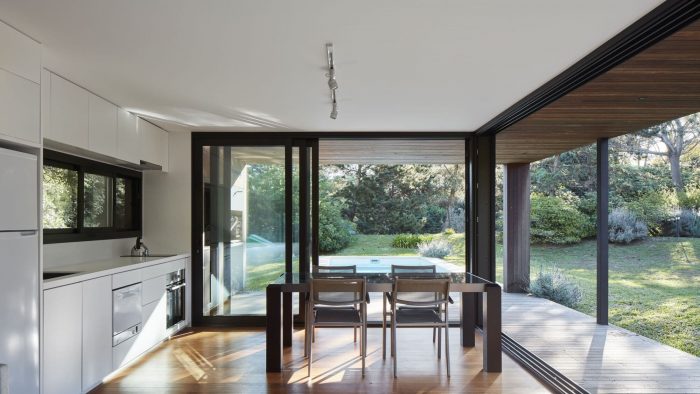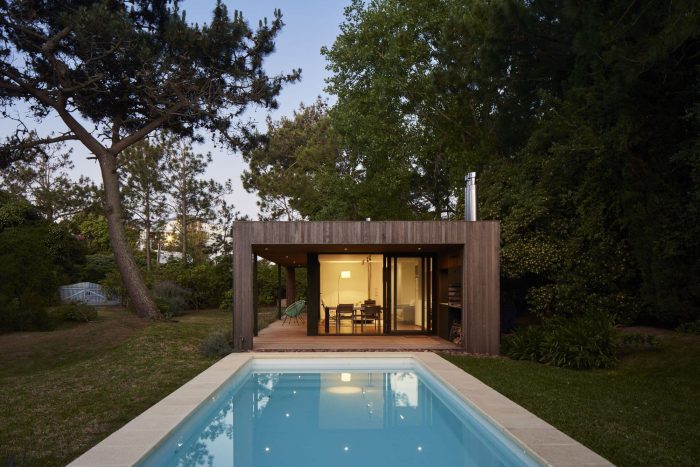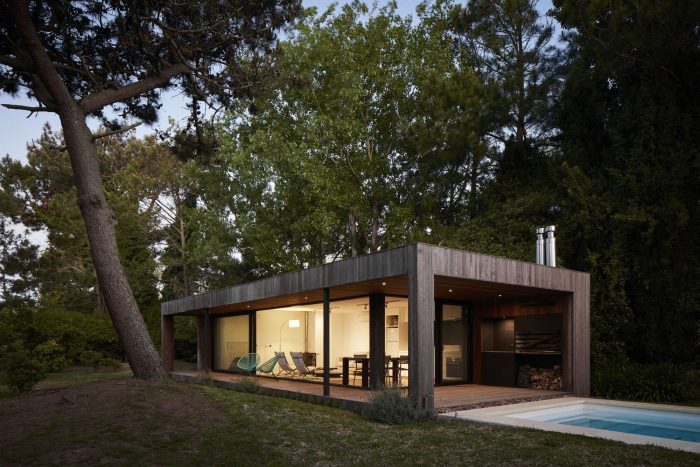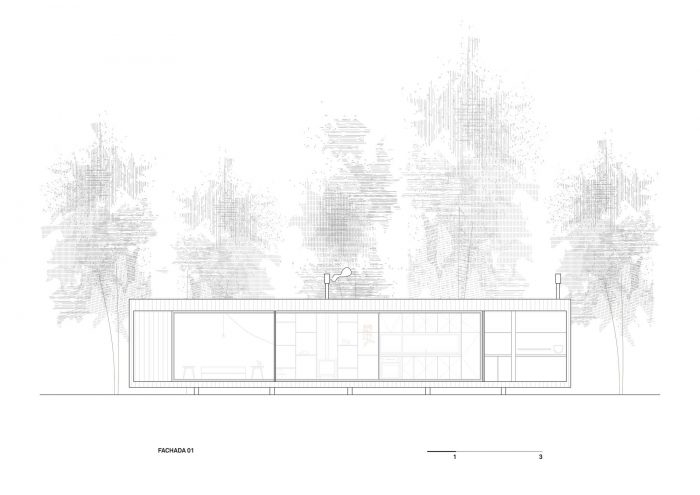在一个综合社区的空白区域,这片土地的所有者谨慎地开始形成这个与周围环境隔绝的花园,并充满了植被,直接与街区的中心相连。 特别是,这块土地从一开始就长满了薰衣草,因此,主要的想法是保持土地的原貌。
In a void area of a consolidated neighborhood, the owners of this land, cautiously begin to form this garden isolated from the surroundings and full of vegetation, directly connected with de center of the block. Particularly, the land was full of lavender from the beginning and consequently, the main idea was to maintain the land as it was.
设计的出发点是业主的期望,他们一直打算建造一个 “Quincho”,把美学和功能作为概念的一部分。Quincho “就像一个经典的烤肉架,这个名字源于 “克丘亚语”,一个用来指代土著人的术语。这定义了一个附属于主屋的半遮盖空间,一般用于户外活动。这种类型学被用于沿线国家的农村房屋和殖民时期的上层社会。实际上,是用于灵活的空间,如烤肉。
The design starts with the expectations of the owners who always had intentions of building a “Quincho”, taking the esthetic and functionality as part of the concept. A “Quincho” is like a classic barbecue, this name stems from “Quechua”, a term used to designate Indigenous people. This defines a semi-covered space attached to the main house, generally used for outdoor activities. This typology was used in rural houses along the country and in the colonial upper class. Actually, is used for flexible spaces like barbecues.
基于这些信息,团队开始设计房子,尽量不修改土地。
Based on this information, the team starts to design the house trying not to modify the land.
这是非常重要的事情,我们永远不会在传统的住房中做,因为它的物流问题,但它与预制房屋完美地结合起来,在iHouse生产厂生产,深入控制过程,与天气条件隔离,所有必要的设备,以获得预期的产品。因此,房子到达后,坐在地形上的接触最少。
This is something important, we never would have made it in traditional housing because of its logistic problems but it perfectly marches with prefab housing, produced in iHouse production plant, deeply controlling the process, isolated from weather conditions, and all the necessary equipment to obtain the expected product. So, the house arrives and sits on the terrain with minimum contact.
这个想法试图混合房屋类型和 “Quincho “类型。它从一个直线型的区块开始,注释了通道的方向,然后是两个L型的区块,以响应当地的法规,所以房子的后面为它提供了隐私。一个区块包含浴室,另一个区块包含厨房、木制火炉和存储家具,因此其他平面完全开放,以突出外部和内部之间的联系,有一个大的玻璃开口,充分利用了花园的优势。最后,投影出一个画廊,将室内和室外合并为家庭生活的一部分。
The idea tries to mix a house type and a “Quincho” type. It starts with a lineal block that remarks the direction of the access, then two L-shaped blocks in order to respond to the local regulations, so the back of the house provides it with privacy. One block contains the bathroom and the other contains the kitchen, wood stove, and storage furniture, so the other planes open entirely to highlight the connection between exterior and interior with a large glazed opening, taking full advantage of the garden. Finally, a gallery is projected to merge the interior and exterior as part of home life.
Architects: iHouse estudio
Area : 969 ft²
Year : 2021
Photographs :Aldo Lanzi
Manufacturers : AutoDesk, Adobe Systems Incorporated, Aluminions del Uruguay, Aluminions del Uruguay, Bia, FV Griferia, FV Griferia, Maguinor Maderas, Manto, Manto, Silestone
Lead Architects : Andrés Garcia, Marcelo Mederos
Design Team : Agustín Sica, Luciana Cano, Lucas Toledo
City : Punta del Este
Country : Uruguay































